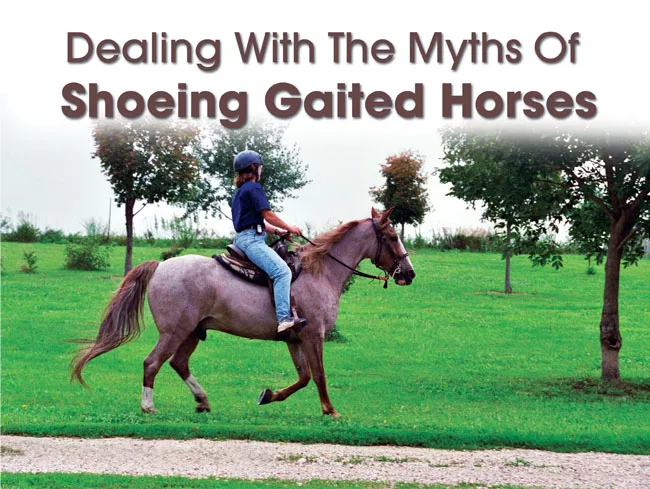American Farriers Journal
American Farriers Journal is the “hands-on” magazine for professional farriers, equine veterinarians and horse care product and service buyers.

A RUNNING WALK. Almost all gaited horses do a four-beat, lateral gait sequence with three feet on the ground at all times.
Gaited horses are becoming increasingly popular in the United States. There are several reasons for this.
Statistics show that the average rider is getting older. This means an increase in back and knee pain, arthritis and injuries. Also, older riders often prefer pleasure and trail riding over show-ring disciplines. For these and other reasons, more and more riders are turning to the smoother ride of gaited horses.
If you are not already working with gaited horses as part of your hoof-care practice, the chances are good that gaited horse owners will approach you in the future.
Many farriers are reluctant to work with gaited breeds. The main reason seems to be a lack of information. Many farriers, owners and veterinarians assume that because these horses move differently from the trot breeds we are most familiar with, they must require special treatment. This misconception is made worse by the weighted shoes, stacked pads and chains that some gaited horses wear in the show ring. In reality, however, if we remember the basic principles of anatomy, form and function, hoof care for gaited horses is not much different than working with any other breed.
Why do trotting horses jar the rider, while at the same speed, the gaited horse is comfortable to ride? The trot contains a moment of suspension where all four legs of the horse are off the ground. This is what makes the gait so rough: the horse essentially throws himself (and his rider)…